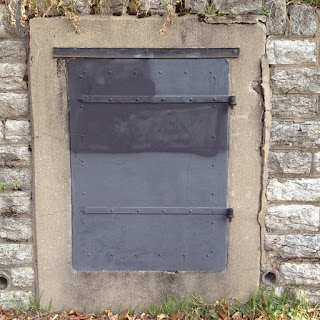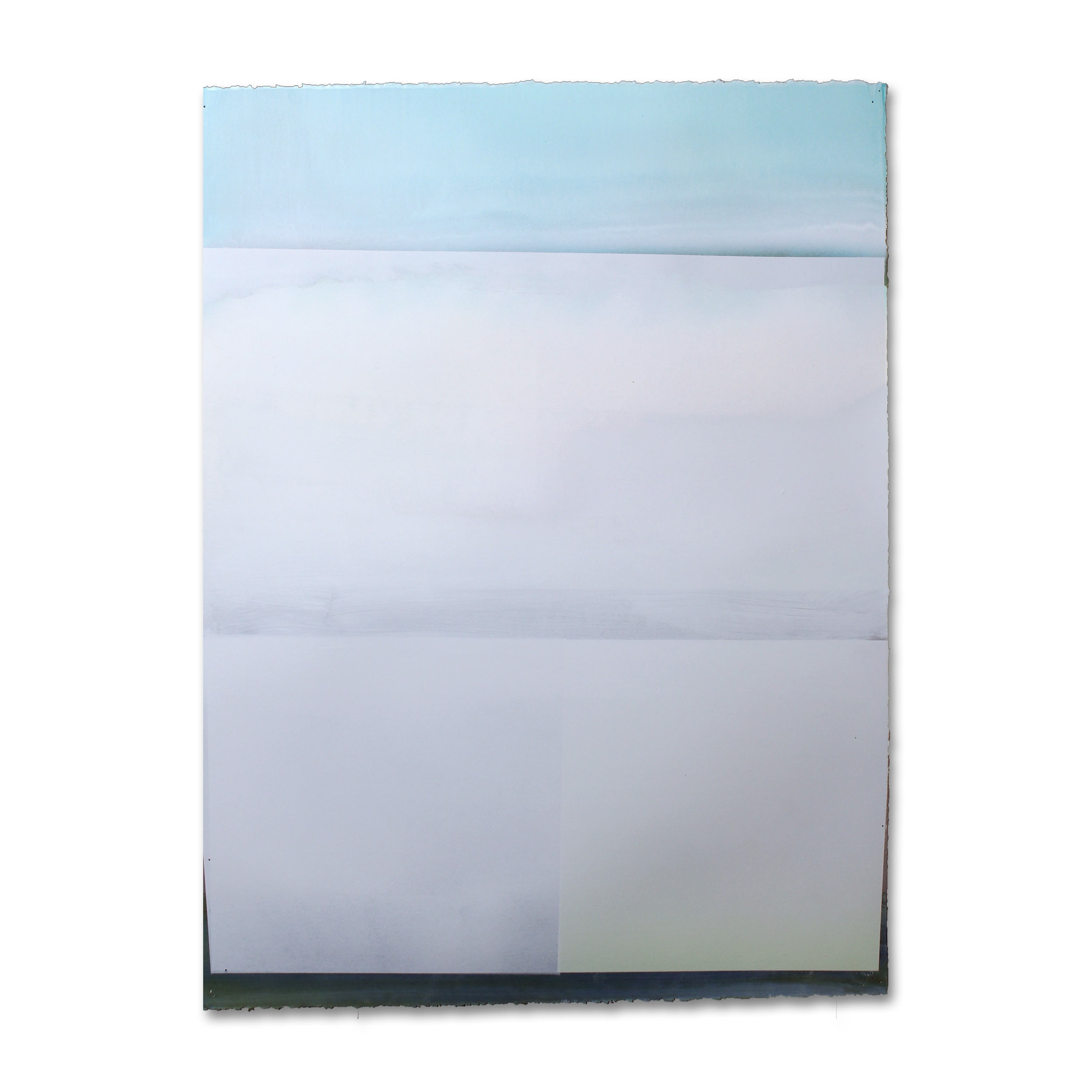
Detail of Jeffrey Cortland Jones, "Notice (Fugitive)"
Every week, we'll be sitting down with one of our gallery artists to discuss their work, process, inspiration, and stories. This week we're speaking with Jeffrey Cortland Jones.
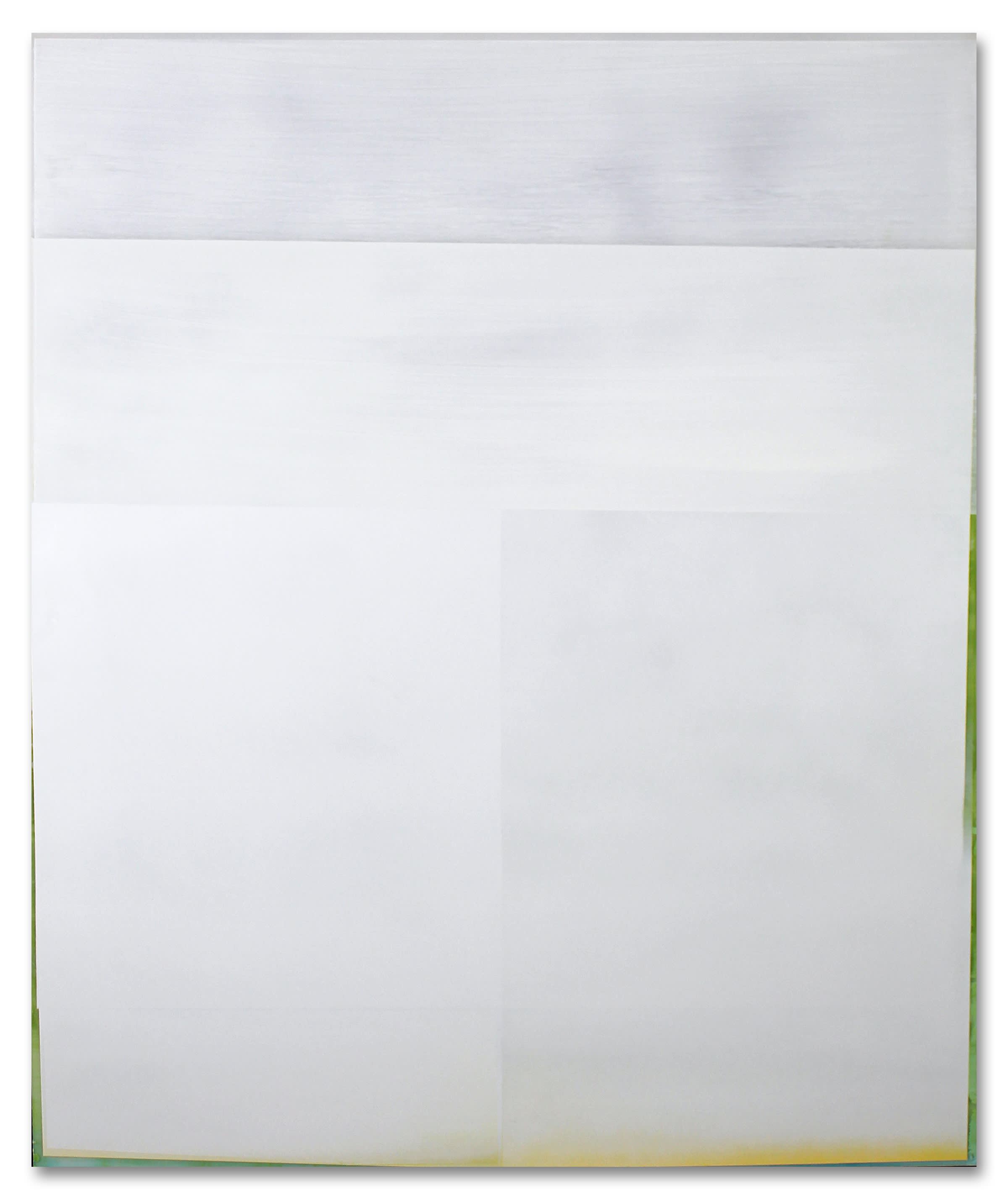
"Notice (Fugitive)"
Jeffrey Cortland Jones' deceptively minimalist paintings reveal themselves in quiet, contemplative moments. There is a deft use of color in the face of their initially perceived monchromatic surfaces, a depth resulting from a rhythmic building up only to be broken back down again, and nods to overlooked landscapes, industrialism, and meloncholy. At times somber, gritty, or hopeful, these intimate works provoke a sense of calm as the viewer delves into what can be found within their layers. Jones writes us from his studio in Cincinnati about his relationship with color, his urban influences, and his evolution towards minimalism.
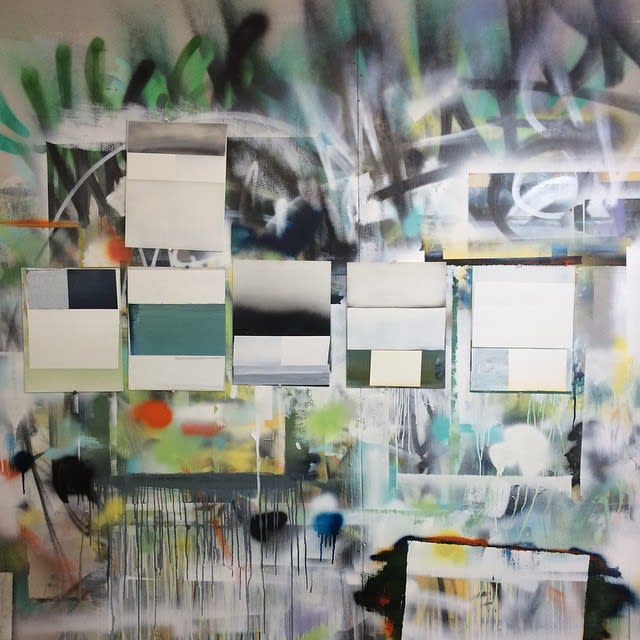
Photo courtesy of the artist
What are your earliest memories relating to art?
I don't know when I knew something was "art", but I know the first time I was affected by an image and realized it was different. 1987, I was 13, and I was over at a friend's house listening to records. We would often sit in the basement with the lights half out and play whatever was "cool" at the time. I remember a bunch of Michael Jackson, Run DMC, Van Halen. But, one day my friend's older cousin was in town from Dallas, dressed all in black, and thought we needed to be educated. She put on one of the records that she brought and out of the speaker came this horrific sound; austere, distorted, hollow, shrouded. It was dark, yet optimistically light. It was isolated, minimal while being overly full, and a deep voice kept moaning "silence", "don't walk away in silence." It was unlike anything I had ever heard before and I remember hating it. I reached for the cover to find this white square with a simple black and white photograph of a barren, snow covered landscape. The image was austere, distorted, hollow, shrouded, mimicking this new sound. It was dark, yet optimistically light. It was isolated, minimal yet full. Next record was equally odd and the voice started with "When routine bites hard, and ambitions are low." This sleeve was almost in reverse. A black square with a simple black and white rectangular photograph of a reclining stone figure below text carved in stone that said "Love Will Tear Us Apart." It was the first time sight and sound made sense together. I changed that night.
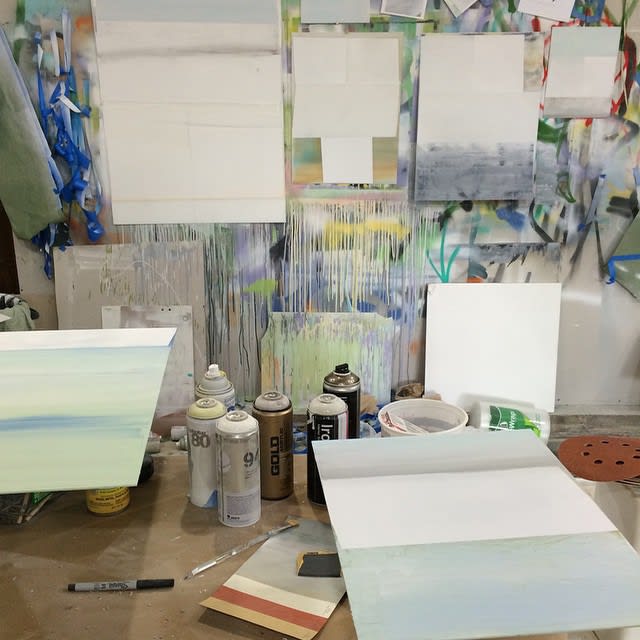
Photo courtesy of the artist
When did you become an artist yourself?
I don't know if I ever became an artist, I just started to make paintings. I began college as a musical theater major and took a basic drawing class during my fourth semester. At midterm, I dropped all my classes except the drawing one.
When you're in your studio with a blank canvas or piece of paper, what inspires you to start working? Are there particular influences, do you set out with a plan in mind?
I just get to work. I don't need to have inspiration in order to work. Sometimes the best time to make something is when you are feeling the least inspired.
Photo courtesy of the artist
What's your process like once you've begun?
My process is pretty simple. I put on a color or shape, and build from there. Each painting goes through a build up and tear down. I tape out an area, paint it, then sand it back down. Then it starts all over again, this time slightly shifting the shape and the temperature of the color. This process happens until I reach the desired surface and coloration.
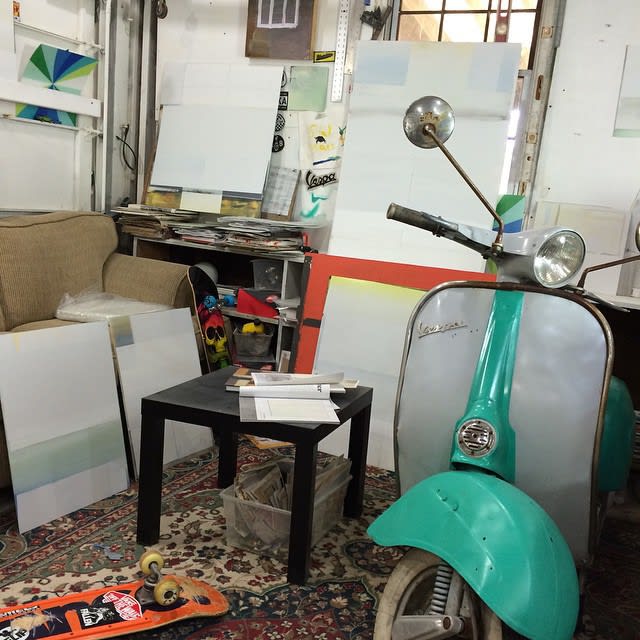
Photo courtesy of the artist
What attracted you to minimalism? Was this always your focus, or was there an evolution towards it?
There definitely was an evolution. I don't think anyone ever sets out to work that way. I did always know that I was attracted to abstraction more than figurative and narrative based work. When I made the switch from theater to painting, my two major mentors were reductive painters, so sort of by default I became a student of minimalism and post painterly abstraction. At first I believed that I couldn't make that type of work. What my professors and the masters were doing resonated; it was sensitive and elegant, full of direction, focus and purpose, all of which I lacked. Ryman, Marden, and Martin where who I wanted to emulate but instead I worked more like Kiefer, Sultan, and Pollack. I misguidedly felt that the work had to be heroic and full and I believed that I couldn't intelligently and honestly defend reductive decisions, so I fought it for years. Slowly, my larger, more gestural work began to decrease in scale and the speed of which I worked. I needed it to be more introspective, introverted, and silent. I needed to have more control. I decided that I didn't need to defend what I was making and that I just needed to lower my head and work.
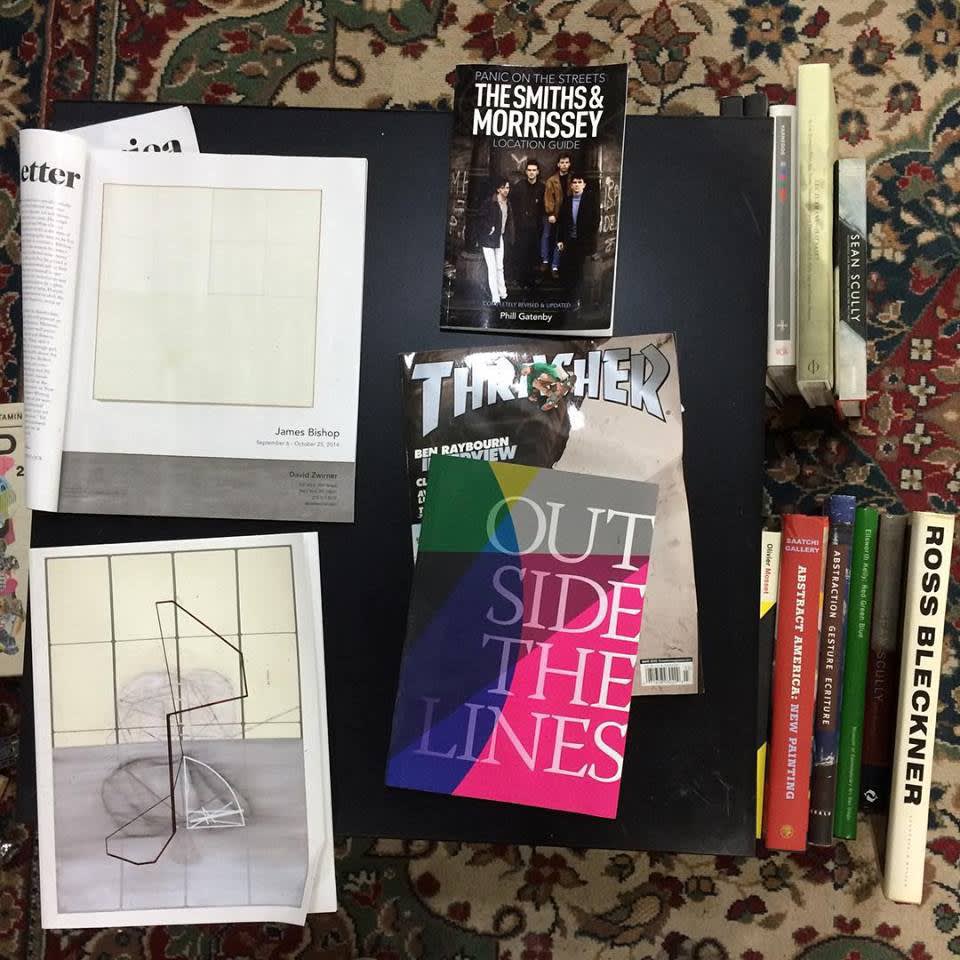
Photo courtesy of the artist
Could you talk a little bit about your relationship with color? When your work is (at least at first glance) primarily shades of whites and grays, I figure that the introduction of color is deliberate. What are the choices you make when it comes to working with color?
I love color. I have taught color theory for almost 15 year and feel that I have a great sensitivity for it. That might be the biggest misconception in my work; that I paint white paintings. I almost never use white alone. I push orange as far as I possibly can, to that moment just before it becomes white. The same goes with red and green and blue and violet. Black is pushed to a neutral. I often layer a "pushed" color, slightly transparent, over a fully saturated color and sometimes there is slight peeking that comes from covering and layering. So yes, color is deliberate and the paintings take time to view in order to see the color.
Photo courtesy of the artist
Your work invites an intimate, contemplative moment with the viewer. In your ideal vision, what do you hope that experience will lead the viewer to meditate on?
I want color and surface to seduce. I want the "colorless" to shift and become "colorful." I want the viewer to want to touch the work. I want the viewer to see things that others pass over. I want to reward the viewer for spending time with my paintings.
Have you noticed your work evolving in any way lately?
I feel that the work is loosening up some, especially the paper pieces. It's been fun to let go a little more and not have to be so precise and accurate. I've let some of the hidden be shown and they have become more gestural. I've also started to push the paintings larger, and I'm not too sure how I feel about it. I think they are clumsy and kind of awkward. Maybe they need to scale up more, or go the other way.
Photo courtesy of the artist
I was looking at your collection of photographs on your website and noticing the patterns of what you were attracted to - overlooked details, unexpected beauty and patterns, grit and industrial scenes, the edges of things. There were several shots that really felt like you had found your paintings out in the world. How do you think this point of view and sensibility of your photos translates to your paintings?
I'm constantly seeing and photographing, always distracted. It's hard to go anywhere with me. I often say that I am a landscape painter. I'm interested in the landscape and its entropy. I love the layering that happens on the wall when there is this ongoing battle of vibrant color splashing across the dull institutionalized surface, and then covered with what someone thinks is the correct color to mask it. I'm drawn to how they try to match the white of the wall, never correctly, and how the underlying color ghosts through. I also love what skateboarding has done to ledges, curbs, and handrails. The marks and coloration from waxing and skating are almost perfect. The concrete becomes visually soft and little shards of color are left behind or flecks of metal sparkle in the light. These are all qualities that I hope to produce in the work
"Workt (Unable)"
Explore more of Jeffrey Cortland Jones' work
here.




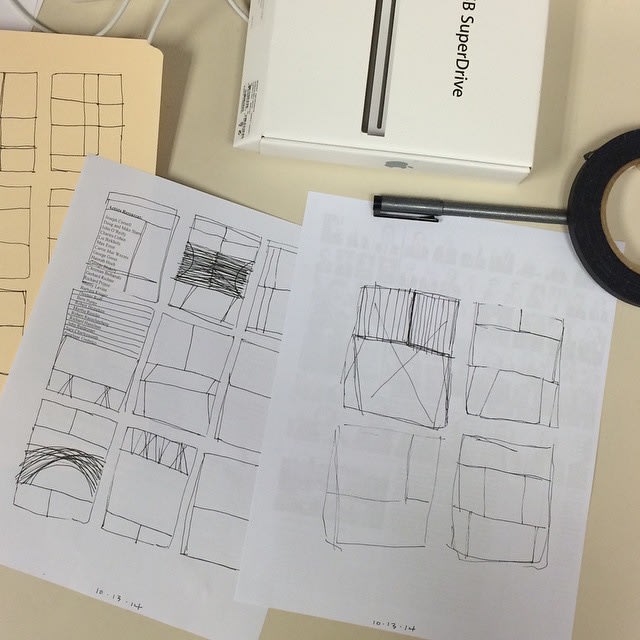
 Photo courtesy of the artist
Photo courtesy of the artist 

